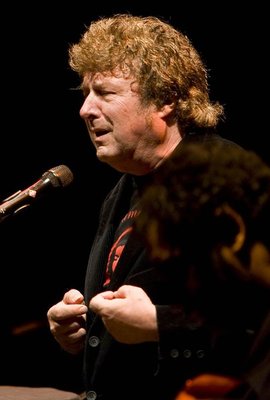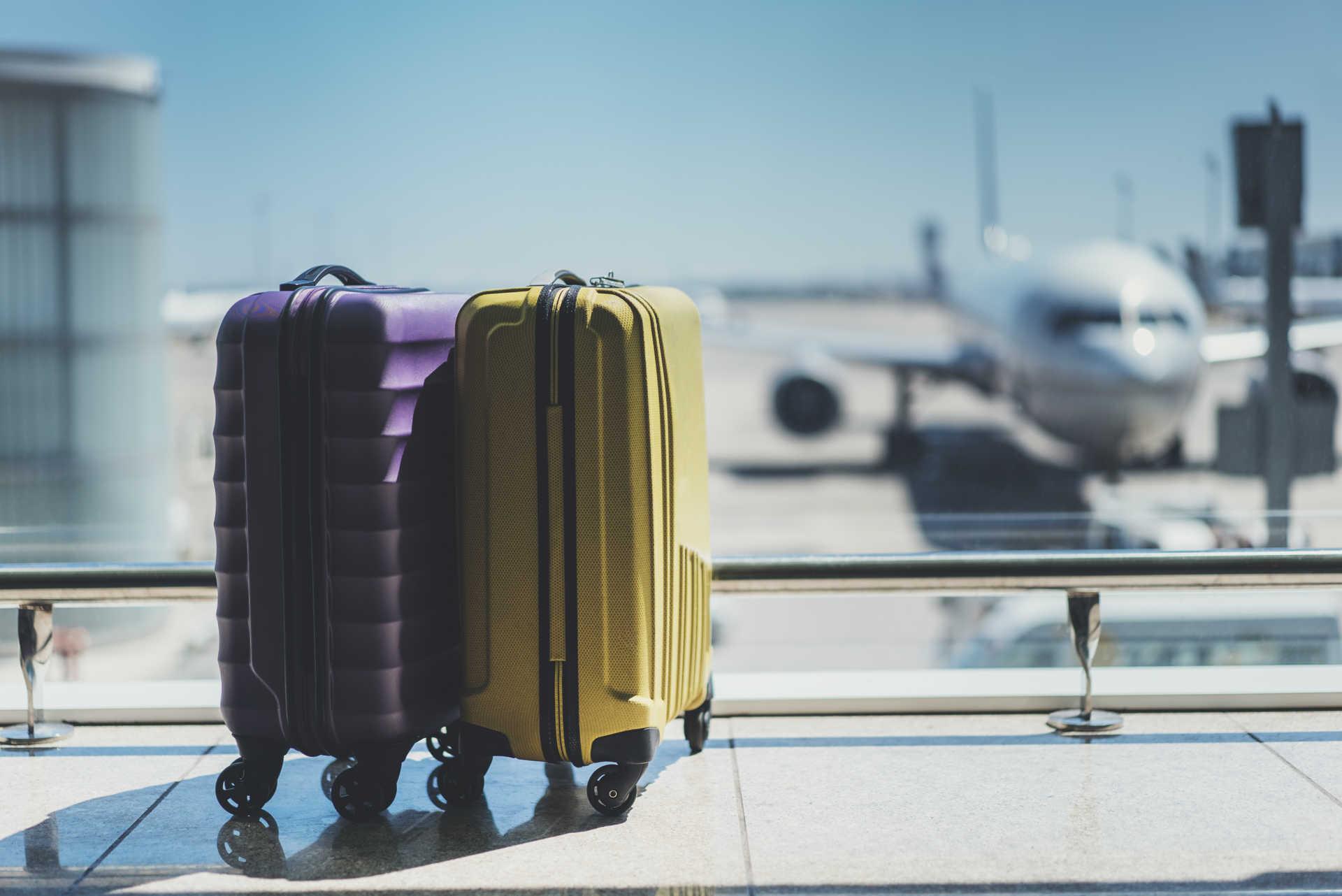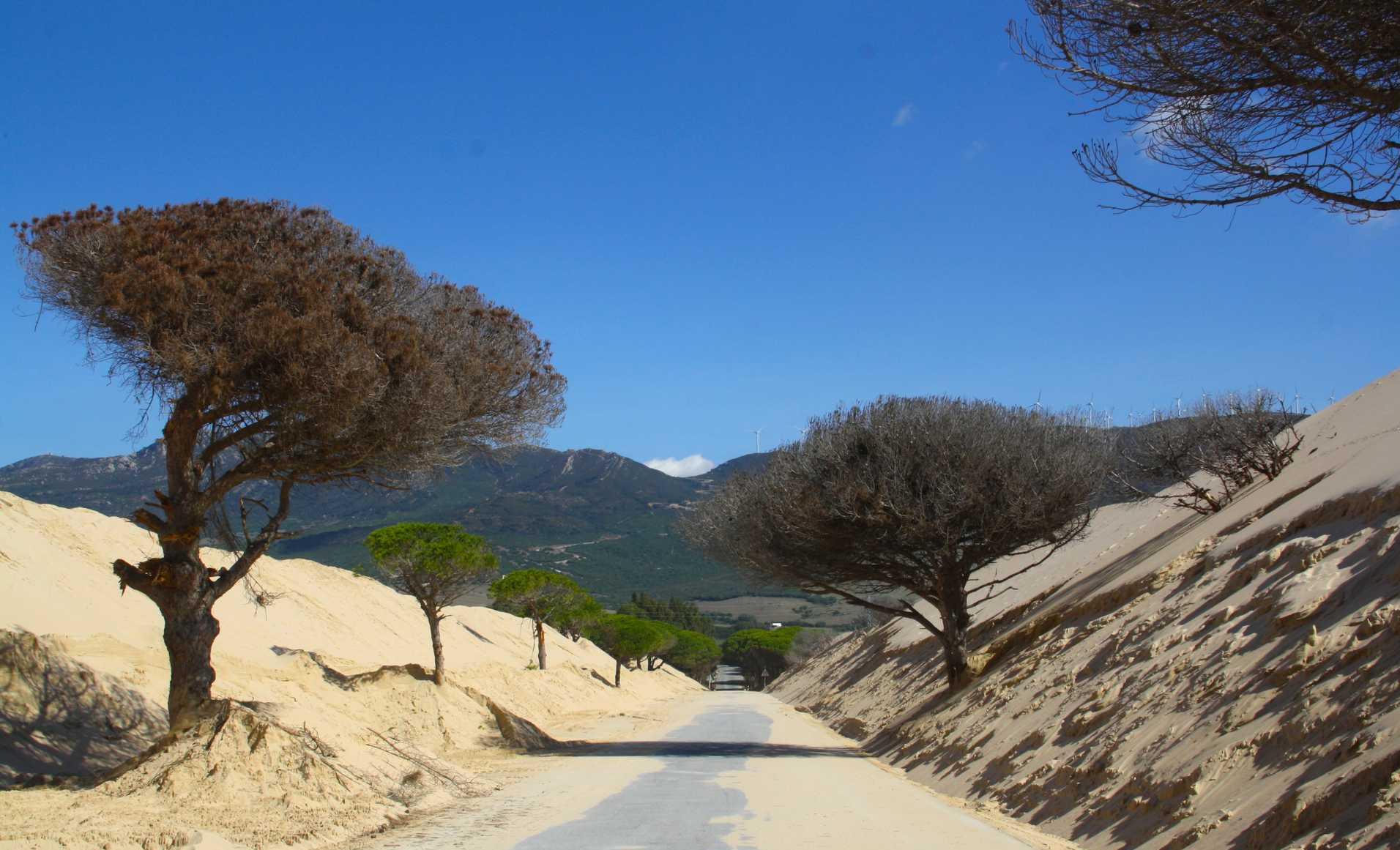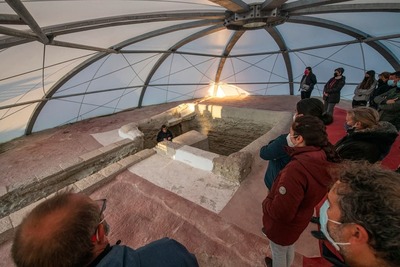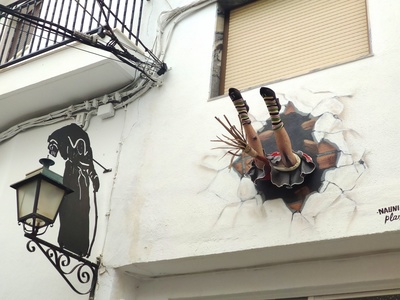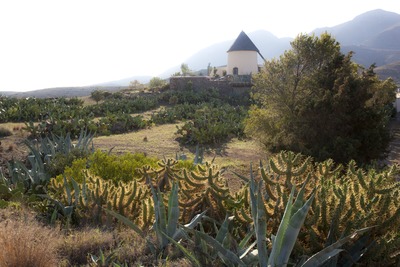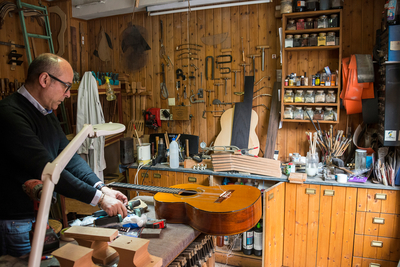Granada and Carlos Cano
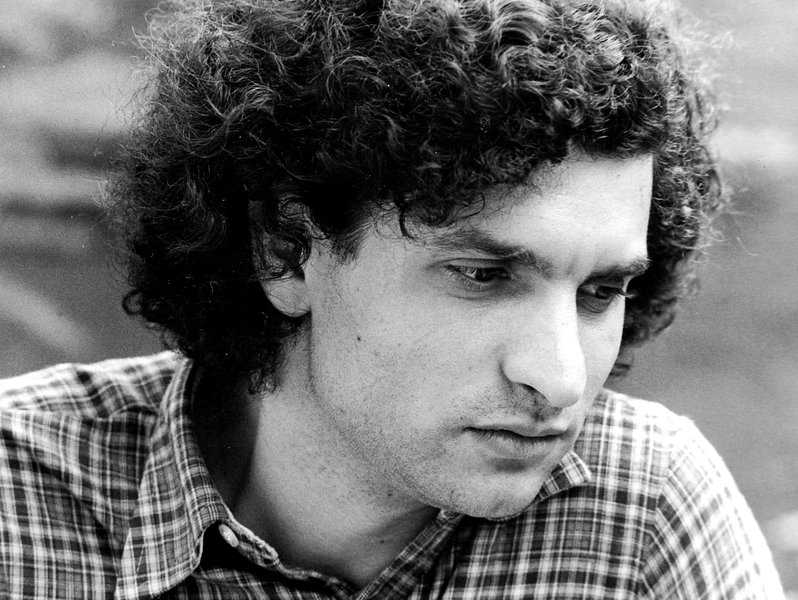
Excitement, commitment, solidarity, passion, feeling and love for his homeland, its people and its culture: Granada and Andalusia.
"...Granada del alma mía,
si tú quisieras contigo
me casaría esta primavera."
(My dearest Granada, if you only wanted I would marry you this springtime).
(Lyrics to Habanera Imposible)
Carlos Cano (Granada, 1946-2000)
Andalusian Chronicler
Singer-songwriter. His songs are a reflection of contemporary Andalusian history. He chronicles the Andalusian emigrant, which he himself was, a condemnation (he was born into a family which was punished by the Spanish Civil War) as seen in one of his songs El Salustiano. Most of his songs are condemnations and allegations against the myth of Andalusian laziness and thus emerge "Viva la grasia" and "la Murga de los currelantes". Granada, the plain of Granada, the lost villages of the Granada Alpujarras (In Órgiva he bought the La Rehoya farmhouse to help Sahrawi children). These landscapes and especially their people come alive in his thoughts and although he spent periods of time in a number of European countries, his birthplace in Granada was always on his mind, he had a special lovefor the Alhambra and popular culture. He played an active role in the process for Andalusia's autonomy, especially in the referendum of 28 February, putting his guitar and his voice at the service of those seeking new horizons. He died of heart failure in Granada on 19 December 2000 and in the words of Enrique Morente, "a bomb of sadness has fallen on our citizens".

Green and white
Carlos Cano grew up in the shadow of the Alhambra, very near the Plaza Nueva, and Carrera del Darro. As a child, Carlos spent his time in the area surrounding the streets leading up to the Nasrid Palace and at the age of 16 left school and devoted himself to song. He had the support of the poet Juan de Loxa and joinedthe musical and literary vanguard of Granada. This heralded the birth of Poesía 70and Manifiesto Canción del Sur in which Carlos Cano took up the voice. It was in a tribute to García Lorca in Paris when the singer-songwriter from Granada started to become known and even to live from his music.
It was in the Plaza Bib-Rambla where he met Alicia who years later was to become his wife. They married in 1972 and now he was obliged to make a living. They moved into a small house near the Science Campus and the Padre Manjón Institute. The Alhambra and Sierra Nevada, two points of reference for the singer-songwriter, can be seen from its windows.
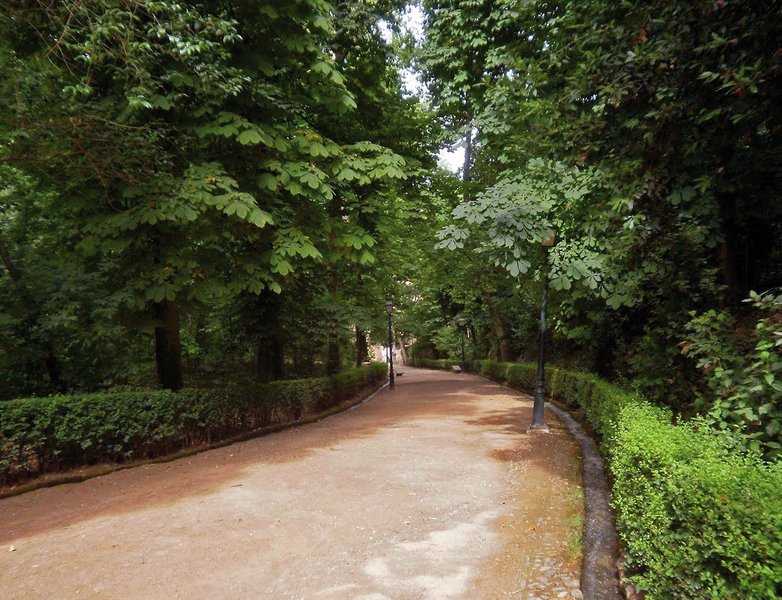
But it was hard for him in Granada. He already enjoyed a certain prestige and performed in small venues, sometimes at the University and always attracted attention with his songs and their lyrics, which were very militant and with very clear social messages. He gradually gained experience, especially when forced to emigrate as a worker to Europe and Catalonia. Personal experience taught him what it was like to be an Andalusian deported from his homeland.
In Barcelona he wanted to study electronics, but ended up as a building worker. Serrat and Lluis Llach were his points of reference, as Paco Ibáñez had been. It was in Barcelona, in the house of an emigrant worker, where he came face-to-face with the Andalusian flag. And that was how the song "Verde y Blanca" was born, the first and most essential of his nearly 200 songs. This song ended up as the Andalusian people's cry for freedom until the official anthem was created by Blas Infante.
His destiny
Carlos Cano returned to Granada. His experience and contact with emigrants left their mark on him. His frequent encounters with Juan de Loxa, Moratalla, Mata and Valdivieso from the Canción del Sur group forged his future. He was a supporter of free Andalusia, a utopian anarchist, a citizen without discipline or rules; marginalised, heterodox, provocative and annoying. He wanted to be master of his own destination, but it wasn't easy. The closed society in Granada turned its back on him and he looked for strength in long walks to discover the Albaicín and the Sacromonte; endless social gatherings where words are essential but they do not earn you a living. He even felt marginalised when he was already a singer-songwriter who was given a warmer reception in the rest of Andalusia than in his native Granada. But Granada was his homeland and his kingdom and he refused to be intimidated. In 1975 he brought out his first album called "A duras penas"; a symbol of how hard it was to move forwards. He received the total support of an established Flamenco artist Enrique Morente and with him shared his feelings for music at his home in the Albaicín.

Granada chronicles
With the Verde y blanca, Carlos Cano, took on the burden of a growing spirit of autonomy. His songs were a reflection of the contemporary history of Andalusia and he had unforeseeable success with an amazing performance at the Faculty of Medicine. Enrique Morente and other artists, singer-songwriters and poets supported Carlos Cano who had to overcome his innate fear of going on stage. Two songs left their mark on those present, El Salustiano, a chronicle of emigrant Andalusia; a condemnation and a cry of rebellion against the dictatorship. In Viva la grasia he was rebelling against the cliché of Andalusian laziness and in La murga de los currelantes he was singing for those who stand up and fight against injustice. When the concert was over Carlos Cano concert went with a group of friends to the Campo del Príncipe to drink a few glasses of wine in the Realejoarea and walk along the tram lines. Carlos told Juan de Loxa that this was the point of no return; a vow which he took at the feet of the Alhambra. Proof of this was Crónicas granadinas which had its roots in nostalgia for Boabdil, the last Nasrid king, he sang to al-Mutamid, the king of Seville, and immersed himself in eight centuries of Al Andalus.
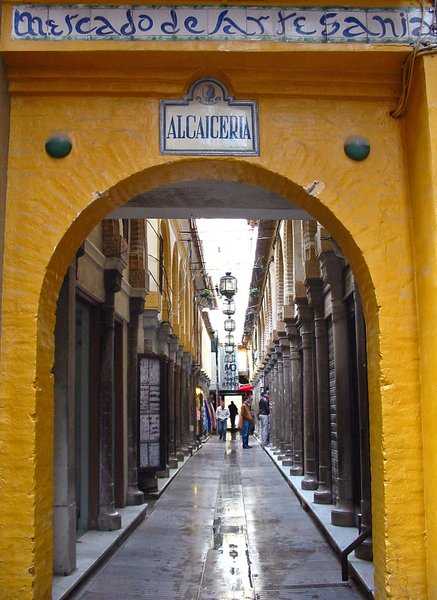
Breeze over springs and coppices
He explored the Contraviesa-Alpujarra to nourish his free and combative spirit, to understand how the Moors rose up in arms against the Catholic Monarchs and in his new home in Las Gabias, on the plain of Granada, he gave free rein to his powerful imagination.
He nourished himself on the poetry of Lorca, Neruda and Luis Cernuda and once confessed to his friend Diego de los Santos, in the Puerta del Vino, that he owed it all to Granada, the light, its memory, the birds and the plain with its silences and poplar groves. And also to the mountains, the springs and the violet light of the sunsets which he captured from Torre la Vela in Granada.
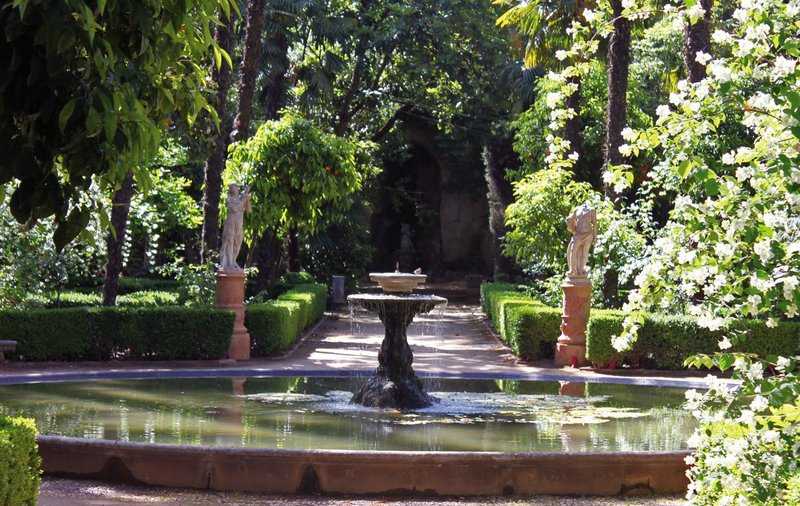
Breezes over springs and coppices when strolling through the famous Carmen de los Mártires, the hypnotic Plaza de San Nicolás, the majesty of the Alhambra which stood in front of him and it was a dream come true when he sang in the Gardens of the Generalife, one night in June 1982, under the moonlight and with the sound of babbling water in the background.
Carlos Cano travelled half-way round the world as an Andalusian singer and his life ended in Granada, 25 years after he had sung his famous tribute to combat "Verde y Blanca". The green and white flag covered his coffin and his historic tribute to the Andalusian flag was heard.
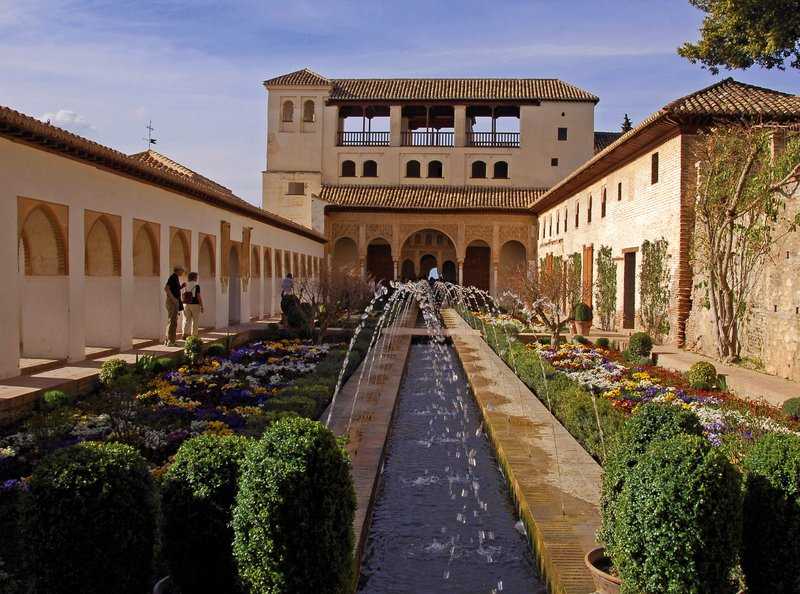
Walks with Carlos Cano
Walk 1. Paseo de los Tristes - Carrera del Darro - Plaza Nueva (I. Santa Ana. Chancery) - Calle Elvira (Mudejar, Gothic and Renaissance houses in the Albaicín, leisure and fun bazaar) - Gate of Elvira.
Walk 2. Natural Science Museum (Padre Suárez Institute) - Gran Vía - Plaza Isabel la Católica - Corral del Carbón - Alcaicería - Capilla Real - Catedral - Plaza Bib-Rambla.
Walk 3. Cuesta de Gomérez - Gate of Las Granadas - The Alhambra Forest - Plaza de los Aljibes - Garden of Los Adarves (amazing views of the Albaicín and Sacromonte) - Puerta del Vino (one of Carlos Cano's favourite spots) - Gardens of the Generalife (where Carlos Cano became established as a singer-songwriter) - Paseo de Los Mártires - Carmen de los Mártires.

